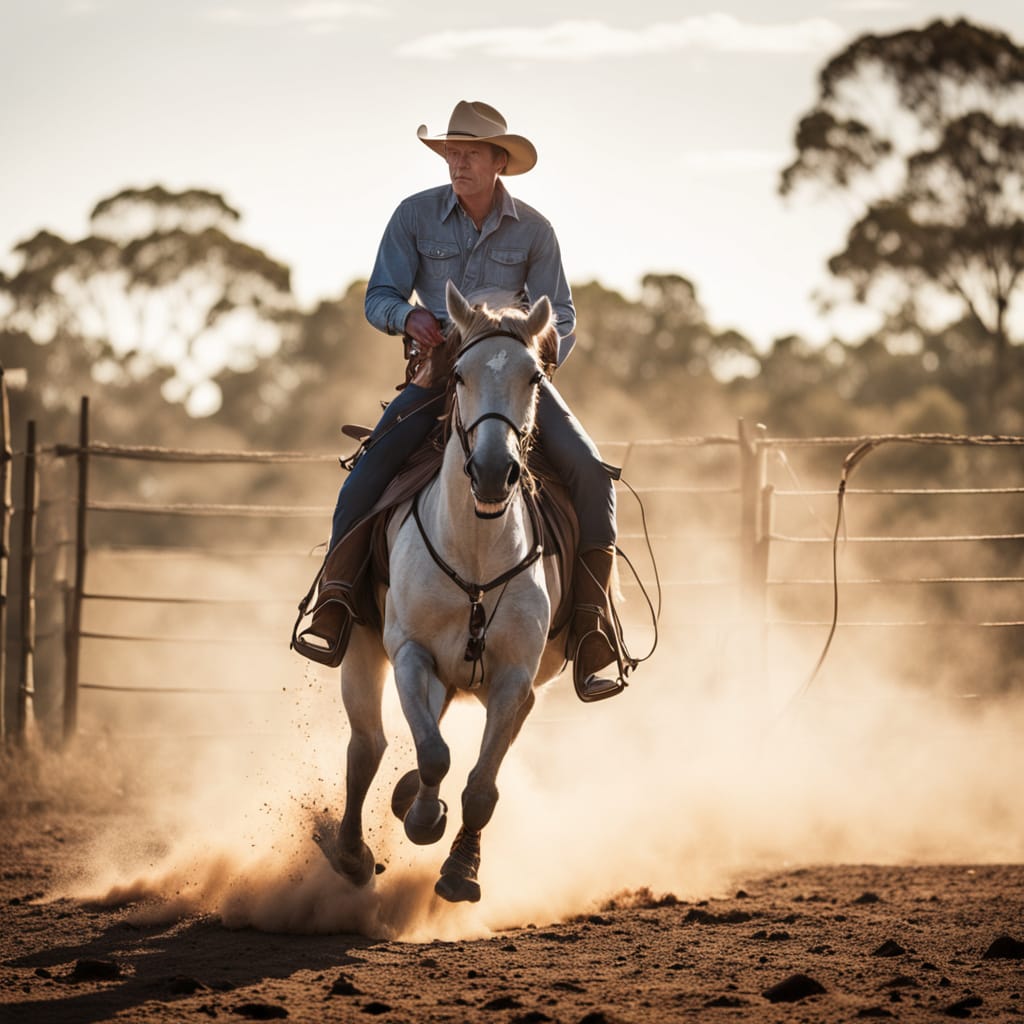
Exploring the World of Campdrafting: A Timeless Equine Sport
Campdrafting is a unique and exhilarating equine sport that originated in Australia. With roots steeped in rural tradition, it combines skill, speed, and precision in an exciting format. Over time, it has grown in popularity, captivating participants and spectators alike. This blog delves into the history, rules, and global presence of campdrafting while exploring its cultural and social impact. Amateur involvement, youth participation, and professional leagues also form key aspects of the sport’s vibrant tapestry.
Origins and History of Campdrafting
Campdrafting traces its origins back to the early 20th century in the Australian outback. It emerged as a practical skill required by stockmen who needed to sort and separate cattle. These workers often competed informally, showcasing their horsemanship and cattle-handling abilities during rural gatherings.
The first recorded campdrafting competition took place in Tenterfield, New South Wales, in 1885. This initial event laid the foundation for organized campdrafting, which steadily gained momentum. By the mid-20th century, the sport had become an integral part of agricultural shows and rural festivals across Australia. Today, it is deeply ingrained in the country’s cultural fabric.
The sport’s growth was significantly supported by the establishment of governing bodies, such as the Australian Campdraft Association (ACA), in the 1970s. These organizations standardized rules and provided a structured framework for competitions. As a result, the sport became more accessible and professionalized, ensuring its legacy for future generations.
Global Popularity of Campdrafting
Although campdrafting originated in Australia, its appeal has transcended borders. The sport is now practiced in countries such as New Zealand, South Africa, and the United States. Each region has embraced the essence of campdrafting while adapting it to local traditions and livestock management practices.
In New Zealand, the sport has gained traction among rural communities, with regular events attracting enthusiastic participants. South Africa’s adaptation of campdrafting showcases the nation’s strong equestrian culture, blending local elements with the traditional format. In the United States, the sport has started to gain recognition, particularly in Western states with a rich history of ranching and cattle management.
Despite its growing global presence, campdrafting remains most popular in Australia. The country hosts hundreds of events annually, drawing thousands of competitors and spectators. Iconic events such as the Warwick Gold Cup exemplify the sport’s significance and serve as a benchmark for international competitions.
Amateur Campdrafting: Youth and Schools
Amateur campdrafting provides a gateway for aspiring riders to experience the thrill of the sport. Across Australia and other participating countries, grassroots events are organized to nurture talent and foster community engagement. These competitions emphasize participation over performance, creating an inclusive environment for newcomers.
Youth involvement plays a pivotal role in sustaining campdrafting’s legacy. Many schools in rural areas incorporate the sport into their extracurricular activities, offering students hands-on experience in horsemanship. Junior divisions at competitions encourage young riders to develop their skills in a supportive setting. Scholarships and mentorship programs further support youth participation, ensuring the sport’s continued growth.
Social clubs and local associations often organize amateur events, where families and friends gather to celebrate their shared passion. These gatherings reinforce the sport’s community-driven ethos and create lasting memories for participants.
Professional Leagues and Competitions
The professional campdrafting circuit has evolved significantly over the years. Numerous leagues and associations now oversee high-stakes competitions that attract elite riders and premium livestock. The Australian Campdraft Association (ACA) remains the leading body in the sport, coordinating events and maintaining standards across the country.
The Warwick Gold Cup, held annually in Queensland, is widely regarded as the pinnacle of professional campdrafting. It features top-tier riders competing for substantial prizes and prestige. Similarly, the Condamine Bell Campdraft and Paradise Lagoons Campdraft draw considerable attention, showcasing the sport’s competitive spirit.
Internationally, the American Ranch Sorting Association has introduced campdrafting-inspired events, blending traditional ranching skills with competitive elements. In South Africa, dedicated leagues host regional and national competitions, reflecting the sport’s growing influence.
Professional riders often enjoy sponsorship deals and media coverage, elevating campdrafting’s profile in the equestrian world. These developments have inspired a new generation of athletes to pursue the sport at an elite level.
Rules and Structure of Campdrafting
Campdrafting is a test of precision, control, and teamwork between horse and rider. The sport’s format involves selecting a single steer from a herd and guiding it through a predetermined course. Riders are judged on their ability to execute the task efficiently and stylishly.
The competition begins in the “camp,” a designated area where the herd is held. The rider has 40 seconds to separate the selected steer and demonstrate control over it. Once this is achieved, the rider and steer enter the “arena,” where the course awaits. The course typically includes figure-eight patterns and tight turns, designed to challenge the rider’s skill and the horse’s agility.
Points are awarded based on criteria such as horsemanship, control of the steer, and completion of the course. A perfect score is 100, with 26 points allocated to the camp phase and 74 to the arena phase. Penalties are imposed for losing the steer or failing to complete the course.
Successful campdrafting requires extensive training and preparation. Riders must develop a deep understanding of their horse’s capabilities and establish a strong partnership. This connection is crucial for navigating the complexities of the course and achieving top scores.
Political and Social Significance
Campdrafting holds a unique place in the cultural and social landscape of rural communities. It serves as a platform for preserving traditional skills and fostering connections among individuals who share a love for livestock and horsemanship.
In Australia, the sport has become a symbol of rural resilience and identity. It highlights the contributions of stockmen and women to the nation’s agricultural heritage. Events often coincide with agricultural shows, drawing attention to the challenges and achievements of rural life.
Politically, campdrafting has played a role in advocating for the interests of rural communities. Associations and clubs have collaborated with policymakers to secure funding and support for the sport. These efforts have ensured that campdrafting remains accessible and sustainable.
Socially, the sport promotes camaraderie and inclusivity. It brings together people from diverse backgrounds, creating opportunities for collaboration and mutual support. Whether through local events or international competitions, campdrafting fosters a sense of belonging and shared purpose.
Conclusion
Campdrafting is more than just a sport; it is a celebration of heritage, skill, and community. From its humble beginnings in the Australian outback to its growing global presence, it continues to captivate audiences and participants alike. Amateur events and youth programs ensure the sport’s longevity, while professional leagues showcase its competitive potential. Politically and socially, campdrafting serves as a unifying force, bridging gaps and highlighting rural culture.
As the sport evolves, it retains its core values of precision, teamwork, and respect for tradition. Whether you are a seasoned rider or a curious spectator, campdrafting offers an unforgettable experience that embodies the spirit of the equestrian world.




